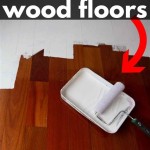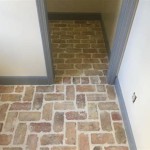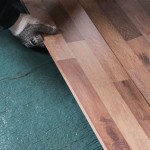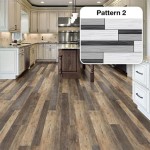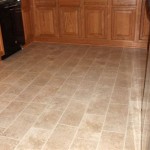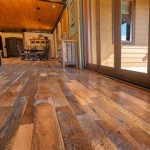Vinyl vs. Laminate Flooring: A Cost Comparison
Selecting the appropriate flooring material represents a significant decision for homeowners and property managers alike. Balancing aesthetics, durability, and cost-effectiveness is paramount. Vinyl and laminate flooring are two popular options that offer a range of benefits, but understanding the cost implications of each is crucial for informed decision-making. This article provides a comprehensive comparison of the costs associated with vinyl and laminate flooring, examining factors that contribute to the final expense.
Both vinyl and laminate flooring offer alternatives to more expensive materials like hardwood or tile. They are generally easier to install, contributing to reduced labor costs, and are available in a wide array of styles and designs, mimicking natural materials with varying degrees of realism. However, differences in manufacturing processes, material composition, and installation requirements lead to variations in overall cost.
A direct price comparison is not always straightforward, as costs can fluctuate based on location, retailer, specific product line, and installation complexities. Therefore, this analysis will delve into the key cost components of each flooring type to provide a clear understanding of the potential financial outlay.
Initial Material Costs: Comparing Price per Square Foot
The initial material cost is often the most readily apparent factor in flooring selection. Vinyl flooring, generally, tends to have a lower initial cost per square foot compared to laminate. This is primarily due to the composition and manufacturing processes involved.
Vinyl flooring is typically made from polyvinyl chloride (PVC) and other plasticizers, offering water resistance and durability. It is available in various formats, including sheet vinyl, vinyl tiles, and luxury vinyl plank (LVP) or tile (LVT). Sheet vinyl is generally the least expensive option, while LVP and LVT, designed to closely resemble hardwood or stone, command a higher price point due to their more realistic appearance and enhanced durability.
Laminate flooring, on the other hand, is a multi-layer synthetic product. It consists of a core layer, usually made from high-density fiberboard (HDF) or medium-density fiberboard (MDF), topped with a decorative layer printed with a wood or stone pattern and protected by a clear wear layer. The complex manufacturing process and the quality of the core and wear layers influence the price. Higher-quality laminate flooring, featuring thicker wear layers and more realistic textures, will naturally be more expensive.
While basic vinyl flooring can be found for as low as $1.00 per square foot, more durable and aesthetically pleasing options like LVP and LVT typically range from $2.50 to $5.00 per square foot. Laminate flooring, depending on the quality and thickness, typically ranges from $2.00 to $4.00 per square foot for standard options, and can extend to $6.00 or more for high-end, water-resistant varieties. Therefore, at first glance, vinyl may appear to be the more budget-friendly option, but the specific type and quality are important considerations.
It's important to note that these are average figures, and prices can vary significantly based on sales, promotions, and the specific retailer. Obtaining quotes from multiple suppliers is recommended to secure the best possible price.
Installation Costs: Considering Labor and Preparation
Beyond the material cost, installation expenses can significantly impact the overall flooring project budget. Installation costs encompass labor, underlayment (if required), and any necessary subfloor preparation. Both vinyl and laminate flooring can be installed as a DIY project, potentially saving on labor costs, but professional installation is often recommended for optimal results and warranty validity.
Vinyl flooring installation can vary depending on the type. Sheet vinyl typically requires professional installation due to its size and the need for precise cutting and seaming. LVP and LVT, particularly those with click-lock systems, are often easier to install as a DIY project, but proper subfloor preparation is still crucial. Adhering vinyl tiles or planks requires a clean and level subfloor, and the application of adhesive can be time-consuming and messy.
Laminate flooring, primarily installed using a click-lock system, is generally considered suitable for DIY enthusiasts with some experience. However, challenges can arise when cutting around doorways, corners, and pipes. Professional laminate flooring installation ensures a seamless and aesthetically pleasing result, minimizing the risk of gaps or uneven surfaces. A crucial aspect of laminate installation is the use of an underlayment, which provides cushioning, sound insulation, and moisture protection. The cost of the underlayment must be factored into the overall project budget.
Professional installation costs can range from $2.00 to $5.00 per square foot for both vinyl and laminate flooring, depending on the complexity of the project and the local labor rates. Factors that can increase installation costs include the need for subfloor leveling, intricate cutting patterns, and the removal of existing flooring. It is advisable to obtain multiple installation quotes from qualified professionals to compare pricing and ensure that the scope of work is clearly defined.
Subfloor preparation is a critical component of both vinyl and laminate flooring installation. A smooth, level, and clean subfloor is essential for a successful and long-lasting installation. If the existing subfloor is uneven or damaged, additional work may be required to level it, which can add to the overall cost. This might involve patching holes, filling cracks, or even installing a new subfloor. Neglecting subfloor preparation can lead to issues such as uneven flooring, premature wear, and potential moisture problems.
Long-Term Costs: Maintenance, Repair, and Replacement
While the initial material and installation costs are important considerations, the long-term costs associated with flooring should not be overlooked. These costs encompass maintenance, repair, and eventual replacement of the flooring material. Understanding the durability and maintenance requirements of vinyl and laminate flooring can help in making a more informed financial decision.
Vinyl flooring is generally known for its durability and low maintenance requirements. Regular sweeping and occasional mopping are typically sufficient to keep vinyl flooring clean and in good condition. Vinyl is also highly water-resistant, making it suitable for areas prone to moisture, such as bathrooms and kitchens. However, vinyl flooring can be susceptible to scratches and dents from heavy furniture or sharp objects. While minor scratches may be repairable, significant damage may require replacing individual planks or tiles, or even the entire floor in the case of sheet vinyl.
Laminate flooring is also relatively easy to maintain, requiring regular sweeping or vacuuming and occasional damp mopping. However, laminate is more susceptible to water damage than vinyl. Spills should be cleaned up promptly to prevent moisture from seeping into the seams and causing swelling or warping. While some laminate flooring is marketed as water-resistant or waterproof, it is generally not as impervious to moisture as vinyl. Scratches and dents can also occur on laminate flooring, and while some repair kits are available, significant damage may necessitate replacing individual planks.
The lifespan of vinyl and laminate flooring can vary depending on the quality of the material, the level of foot traffic, and the maintenance practices. High-quality vinyl flooring, particularly LVP and LVT, can last for 15 to 20 years or more with proper care. Laminate flooring typically has a lifespan of 10 to 15 years, although some premium products may last longer. The cost of replacing the flooring should be factored into the long-term cost analysis. This includes the cost of the new flooring material, installation expenses, and the disposal of the old flooring.
Furthermore, the need for specialized cleaning products or equipment can also contribute to the long-term costs. While both vinyl and laminate flooring can be cleaned with mild soap and water, certain types of stains or spills may require specialized cleaning solutions. The cost of these cleaning products, as well as the potential cost of professional cleaning services, should be considered when evaluating the overall cost of ownership.
In summary, while vinyl flooring generally requires less maintenance and is more resistant to water damage, both flooring types can provide a durable and cost-effective flooring solution when properly maintained. The long-term cost will depend on the specific product chosen, the level of care provided, and the expected lifespan of the flooring material.

Laminate Vs Vinyl Flooring Costs Pros Cons Differences 2025

This Or That Laminate Vs Vinyl Ben Laube Homes

Vinyl Plank Vs Laminate Flooring Which Is Right For You Onflooring

Laminate Vs Vinyl The Home

Laminate Vs Hardwood Vinyl Flooring 50floor

Laminate Vs Vinyl Flooring Thumbtack Com

Is Laminate Flooring Really Er Than Vinyl

Vinyl Vs Laminate Flooring Refloor

Laminate Vs Vinyl Flooring What S The Difference

Vinyl Flooring Vs Laminate
See Also
